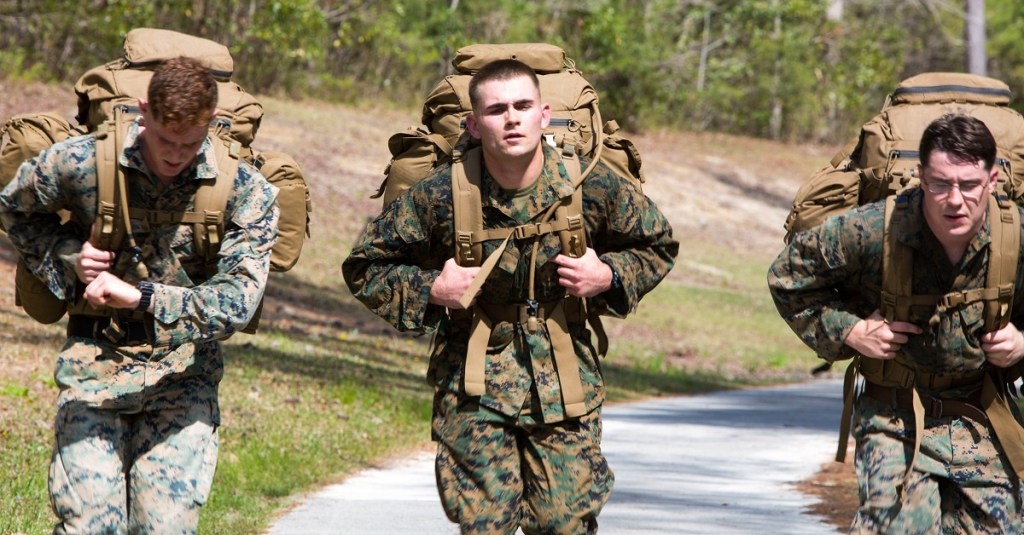In today’s combat environments, it’s not at all uncommon to see U.S. Marines burdened with more than 150 pounds of gear, with reports of some loadouts climbing over 200 for those tasked with operating or supporting larger weapons systems.
It goes without saying that carrying that much weight on foot can compromise a war fighter’s ability to operate, but that begs the question: just how much can you carry on your back before your trading gear for combat effectiveness?
It turns out, a whole lot less than you’d think.

According to research conducted by Marine Corps Capt. Courtney Thompson at the Naval Postgraduate School, the most a Marine should be stuck carrying into the fight is a comparatively measly 58 pounds. While that may sound like a lot for your average Sunday hiker, for America’s warfighters, that’s a figure that seems impossibly low for today’s combat operations.
The problem with that figure is that the vast majority of that 58-pound load is occupied by non-negotiable personal protective equipment. A standard combat loadout tends to weigh in at around 43 pounds on its own — combat loadout in this case meaning flak jacket, Kevlar helmet, rifle and the standard gear you wear rather than pack. Whatever you may need for long term survival or other mission requirements has to be added to that 43-pound baseline, meaning the 58-pound combat-cutoff would allot only fifteen pounds for all other gear, from breaching tools to spare socks and MREs.
“Marines always have to be prepared to engage with the enemy,” said Captain Thompson. “In doing so, they typically have personal protective equipment, weapons, and other gear. Ultimately, the goal is to make those Marines as lethal and survivable as possible, and my thesis works towards that same goal.”

Captain Thompson’s research, of course, won’t create an immediate change in loadouts for troops in combat. Any Marine with a pair of knees can tell you that carrying 200 pounds on your back will make even the most basic infantry tactics an exercise in exhaustion and managed injury. Current combat loads are dictated by mission requirements, not comfort. But that isn’t to say that the research won’t lead to changes in the future. Her work was awarded the Stephen A. Tisdale Thesis Award by the Naval Postgraduate School Department of Operations Research, and according to Thomspon, the Marine Corps has taken notice.
“The commanding general of the Marine Corps War-fighting Lab is asking for my research and results,” Thompson said. “I also worked with a few people at Marine Corps Systems Command who’ve been looking at this problem specifically so they may use it to help support their further research.”
While it may be a long time before Marines see any relief in their combat loadouts, Thompson’s research can benefit any of us wondering just how effective we are with our kits on (whether it’s a hiking kit or full battle rattle). For most of us (if you’re still in Marine Corps shape), you should cut it off at around 58 pounds of total gear strapped to your body. If you’re not quite the Marine you used to be… that number is probably a bit lower.


























